Digital Permeability TesterNKP-V3
- Calculation of standard method is unnecessary
- Standard table (quick comparison) in quick method is unnecessary
- The adjustment of the Borehole is unnecessary
- A water tank is unnecessary
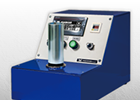
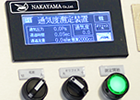
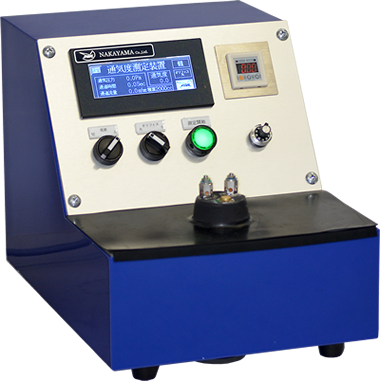
Overview
- Unlike conventional products, water is unnecessary.
- Method for measurement: Make TP(Tamp down three times). Fit it in the predetermined position.
How to use the tester
Quick method
Place the tester on a horizontal base. A sand test piece is packed in a test cylinder, inserted in the tester together with the cylinder, and sealed with a rubber plug to prevent air leak. Then, the appropriate orifice is chosen and the start button is pushed to start the measurement.
Standard method
\[Permeability = {V \times H \over P \times A\times T}\]
- V =air volume passed through the test piece (cc) 2000cc
- P = pressure difference between the upper side and lower side of the specimen (Pa) (P = Pa ÷ 98)
- A = sectional area of the specimen (A = 19.635cm2)
- H = height of the specimen (cm) (5.0 ± 0.1cm)
- T = time necessary for the air of 2000cc to pass the specimen (min)
Testing of dry sand mold
A standard specimen (50mm in diameter and 50mm in height) is prepared with a sand rammer and is taken out with a push rod for drying. A weak specimen is taken out on a disc of 50mm diameter and sent to drying on the disc.
The specimen is dried at 105 to 115 degree C for one to two hours and taken out for cooling. After cooling, it is inserted in a dry sand permeability specimen cylinder. The valve on the cylinder is opened and air is sent from the rubber bulb to the rubber sheath in the cylinder for ensuring pressure tight support of the specimen. The cylinder is inserted into the rubber stopper, and permeability is measured in the same way as the case of the green sand.
Calibration of orifice
Keep the tester clean all the time, and check occasionally. For checking the tester, turn the “select measurement” to “3=check”, and select “0=flow rate” in “check selection”. Air passing time is measured without inserting a test cylinder to check if the following specification is satisfied. If not satisfactory, calibration is needed, because otherwise correct measurement is impossible.
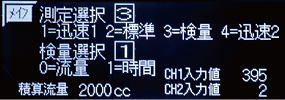 |
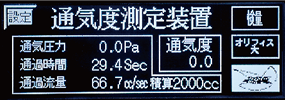 |
| Screen display of the select measurement. | Screen display of the measured result |
| Air pressure in chamber Time necessary for discharging air of 2000cc |
= | Large orifice: 30s Small orifice: 4m30s (allowance: 2%) |
Permeability test of mold surface
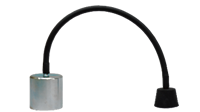
For measuring permeability of formed sand molds or formed cores, the receiving end of a rubber tube is connected to the tester at the “rubber plug” using a part in the options. The other end of the rubber tube is pushed against the test piece surface. Then testing is proceededed in the same way as in the measurement of test pieces in the test cylinder. This way of testing is not as precise as that of the proper testing using a test piece in the cylinder, yet is convenient in accessing permeability of already formed molds.
Calibration
The relation between air pressure and permeability
- Use the small orifice for medium to fine sand grains.
- Use the large orifice for medium to coarse sand grains.
small orifice
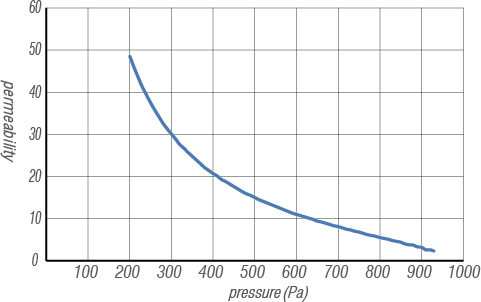
large orifice
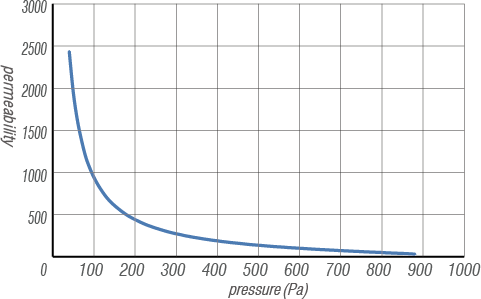
Note
Calibration can be made using the touch panel,
Specification [ Type : NKP-V3 ]
| Size | H300 × W280 × D400 mm |
|---|---|
| Weight | 16.8kg |
| monitor | Touch panel |
| Power supply | AC100V |
| Option | Can add the communication facility |
Sold separately
 |
 |
| Pump / Sand cylinder | Tool |

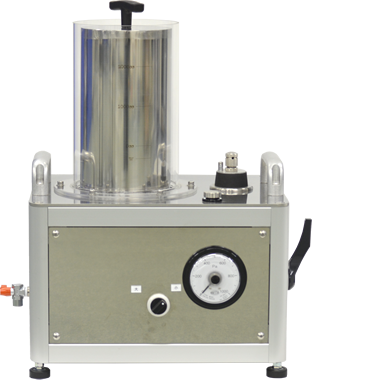 NKP-V2Permeability Tester (Analog type)
NKP-V2Permeability Tester (Analog type) 
